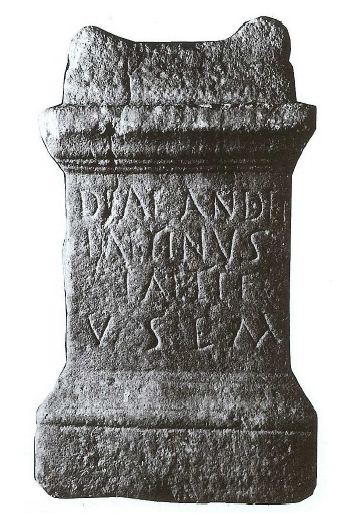4) Andeis (‘the Great One’?): Plateau of Plech
The goddess Andeis is known from a single inscription, engraved on an altar in white marble, discovered at the beginning of the 19th c. in the old cemetery situated on the southern side of the hill of the Plech, situated near Caumont, in the canton of Saint-Lizier (Ariège), in the territory of the Consoranni.1205 The inscription reads: Deae Andei Laetinus Laeti f(ilius) v(otum) s(olvit) l(ibens) m(erito), ‘To the goddess Ande, Laetinus, son of Laetus, paid his vow willingly and deservedly’ (fig. 58).1206 A guttus* is drawn on the left side of the altar and a patera* on the right side. Andeis’s name can be related to the intensive Celtic root and-, ande, signifying ‘very’ or ‘great’, comprised for instance in the divine name Andarta (‘Great Bear’).1207 Her name might therefore mean ‘The Great One’, an epithet denoting divine grandeur and strength as well as geographical height.1208 On account of this possible etymology* and the place of discovery of the stone, it might be inferred that Andeis was worshipped in relation with the mount of the Plech, where a sanctuary may have been situated, but this remains a conjecture as long as excavations are not carried out at this location.1209
